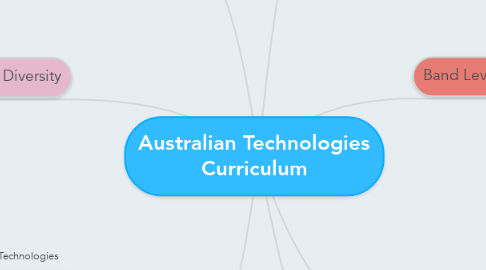
1. Student Diversity
1.1. Students with Disability
1.2. Gifted and Talented Students
1.3. Students with whom EAL/D
2. Strands
2.1. Digital Technologies
2.1.1. Knowledge and understanding
2.1.1.1. Digital systems •the components of digital systems: hardware, software and networks and their use
2.1.1.2. Representation of data •how data are represented and structured symbolically
2.1.2. Processes and production skills
2.2. Design and Technologies
2.2.1. Knowledge and understanding
2.2.1.1. Technologies and society •the use, development and impact of technologies in people’s lives
2.2.1.2. Technologies contexts •technologies and design across a range of technologies contexts
2.2.2. Processes and production skills
2.2.2.1. Creating designed solutions by: •investigating and defining •generating and designing •producing and implementing •evaluating •collaborating and managing
3. General Capabilities
3.1. Literacy
3.2. Numeracy
3.3. Information and Communication Technology (ICT) Capability
3.4. Critical and Creative Thinking
3.5. Personal and Social Capability
3.6. Ethical Understanding
3.7. Intercultural Understanding
4. Key Ideas
4.1. Creating preferred futures
4.2. Project management
4.3. Thinking in Technologies
4.3.1. Systems thinking
4.3.2. Design Thinking
4.3.3. Computational thinking
4.4. Information and communication technology in the Australian Curriculum
4.5. Safety
4.6. Animal ethics
5. Band Levels
5.1. Year 1
5.2. Year 2
5.3. Year 3
5.4. Year 4
5.5. Year 5
5.6. Year 6
6. Cross-curricular Priorities
6.1. Aboriginal and Torres Strait Islander Histories and Cultures
6.2. Asia and Australia’s Engagement with Asia
6.3. Sustainability
7. Aims
7.1. Design and Technologies
7.1.1. produce designed solutions suitable for a range of Technologies contexts by selecting and manipulating a range of materials, systems, components, tools and equipment creatively, competently and safely; and managing processes
7.1.2. understand the roles and responsibilities of people in design and technologies occupations and how they contribute to society
7.2. Digital Technologies
7.2.1. use computational thinking and the key concepts of abstraction; data collection, representation and interpretation; specification, algorithms and implementation to create digital solutions
7.2.2. confidently use digital systems to efficiently and effectively transform data into information and to creatively communicate ideas in a range of settings
7.2.3. apply systems thinking to monitor, analyse, predict and shape the interactions within and between information systems and understand the impact of these systems on individuals, societies, economies and environments.
